Yucatan... Getting Better and Better!
Carnaval is in full swing!
>
By the time you read this, we will be in the middle of Carnaval. On Friday night, there will be a "Gringo Bus" in the parade. For the third year in a row, a group of expats rent out the Turibus, the double-decker bus that usually carried tourists around town. The bus is outfitted with drinks and gringos and we spend the entire parade throwing goodies to the crowd. If you're at the parade on Friday night, look for us! If you don't get to the Parade on Friday night, don't despair. The parade on Saturday night is essentially the same. And the parades on Sunday afternoon and Tuesday afternoon are also pretty much the same, though the one on Tuesday is bigger (its the finale, after all!). Monday night's parade has a different twist... Meridanos in traditional costume. Be sure to catch some of the festivities!
L’Alliance Française in Merida
The Alliance Française is a non-profit organization, founded in 1883, which now has over 1100 chapters in 132 countries. Its goal is the dissemination of French language and culture, which it does through classes, lectures, exhibitions, other cultural events, scholarships, etc. Merida has two chapters of L’Alliance Française: Local Norte: Calle 23 # 117 x 24 and Local Centro: Calle 56 # 476 x 55 y 57. This is an active civic organization that we hope to see much more of in the future. For more information, call: 927-2403.
Merida Insider To Be Reborn as Yucatan Insider!
Thank goodness (and Bob) for bringing the site back…. And thanks to Debi in Merida for the scoop! For our new readers, Merida Insider was a great forum for folks who live here and those who think they might want to live here – and it had thousands of members. We could always find somebody on MI who could quickly answer almost any question that came up and it is sorely missed. Lots of great friendships began on MI and we are looking forward to the new site!
Project: New Section of Malecon in Progreso
The original plans for expansion of the Malecon in Progreso did not meet all of the necessary environmental requirements, so they went back to the drawing board. Soon, the new plans will be evaluated and it is believed that they will easily pass review. If this plan is approved, look for a wider beach to accommodate the turtles, as well as bicycle paths and other tourist-friendly perks.
Update on Streets: Valladolid and Izamal
Valladolid has finished a complete repaving of the streets in the town center. The streets have been redone with stamped concrete so that they look like old stone roads. The sidewalks have all been redone as well. The next project will be to bury the telephone and power lines. The Sunday evening concerts in the park have also resumed. They are from approximately 7:00 PM to 9:00 PM. Izamal is opening its own new stamped concrete streets and it too is getting ready to bury telephone and power lines. These projects are especially important in Valladolid, which has become a rapidly growing commercial and industrial center, as well as the center of tourism for those who are traveling between Cancun and Merida. Modern infrastructure, and completing the new hospital, will go a long way toward making the entire area successful far into the future.
Motor Home Caravans in Izamal
For the second year in a row, motor home caravans have been arriving in Izamal. The first group of 22 came on Feb. 6. Then, 11 more showed up on Feb. 11. Ten more are expected on Friday. From what we understand, the tourists in these caravans come from all over the United States. We can only imagine the stories they will have to tell when they get home. We know that they do a lot of shopping while they are in Yucatan and we would like them to know that their contribution to the local economy, and especially to the artisans, is deeply appreciated.
Second Millionaire Cruise Comes to Progreso
Four years ago, a privately owned cruise ship brought 60 millionaires to Yucatan to take a look at our state and investment opportunities here, but they didn’t have much time to spend in Progreso itself. This time, the ship is returning with 100 millionaires and they will be adding an extra day to their visit.
Which Way Did Those Birds Go?
There is something to be said for GPS locators. In the summer, people north of the border put up purple martin houses and wait for these mosquito eaters to arrive in great numbers. But where do they go in the winter? Now, with GPS locaters, we know that they spend a couple of weeks in Yucatan and then head for their winter home in Manaus, Brazil. Unfortunately, their numbers are declining and it may be due to habitat loss in Brazil. With information from the GPS locators, it may be possible to turn this situation around. In the meantime, the purple martin will continue to migrate at the amazing speed of over 300 miles per day. Read all about tracking these birds here.
Candy: “Made in Mexico”
Over the past decade, the following candy companies have moved to Mexico, mostly because the U.S. government propped up sugar prices to the point where they were out of range for the candy companies: Brach’s Confections from Chicago to Linares, Nuevo Leon; Bob’s Candies (candy canes) from Albany, NY, to Reynosa; Sunrise Confections (grocery store brand candies) to Juarez, now with 1,000 employees. Hershey has opened new plants in Guadalajara and Monterrey, with new Hershey’s Chocolate Museum in Monterrey, and Mars is now in Montemorelos, Nuevo Leon. Still, Mexico is barely holding its own in competition with cheaper prices from Brazil, the Ivory Coast and Indonesia, but it is willing to live, during these difficult economic times, with lower profits in order to save jobs and grow the candy industry in the country. What a novel concept!
Expat Blog Winner
>
Far be it from us to interpret Mexico Trucker Online. Instead, we will let this award winning site speak for itself: "Mexico Trucker was established to put forth the truth about the Mexican transportation industry, transportation law in Mexico and any other subject that concerns the American trucker. It is my desire to make Mexico Trucker the definitive source of information concerning the Mexican trucking industry, the country and any other issue that arises that needs concise, reasoned and truthful answers.” Toward this goal, the author of Mexico Trucker Online has created a blog that was recently named one of the 10 best expat-Mexico blogs on the web. Our congratulations for a job well done!
Earth Snapshot: Yucatan
The nice folks at Earth Snapshot created a set of satellite photos that shows the evolution of our weather throughout the year. We particularly like the big picture because we can magnify it to the point of almost being able to see the fish in the water off of our beach. For our readers who love maps – or for those who want to see what our peninsula is like, Click Here and Enjoy!
Driving Through Mexico
Whether you are driving to Yucatan from the border, or visiting from one Mexican location to another, it is always helpful to know your route, how much tolls will be, and how long it will take to make the trip. To get the latest information, we thought we would revisit the official site that allows you to design your own route and gives all of the information you need about it. Visit Rutas Punto a Punto (Routes from Point to Point) and plot your own course through Mexico. Change from kilometers to miles, here.
Important Driving Links
We have found two additional resources that you might be interested if you are ever planning to drive from the Yucatan back to the States. The first one, Brownsville to Merida/Progreso Driving Info, is the best site on this topic we have ever seen. It has city maps and plenty of “how to” information. David Grundy did an outstanding job and all of us who cross Tampico especially are deeply appreciative of his work.
The second one outlines Gulf Coast Driving Distances and is an excellent site, especially for those who are trying to calculate how much gasoline money needs to be in included in their budget.
Speaking of RVs...
Ray, Marcia, and their cat have decided to spend a few months following the coast of Mexico in theirs. They crossed the border at Matamoros, came down along Costa Esmeralda, and are (at this writing) at Laguna Catemaco. Read Marcia’s blog and begin at the beginning. Just click “Next Entry” at the end of each page to get a great, up-to-date view of what can be seen and experienced by simply wandering one’s way down the east coast of Mexico. We hope they have a great time and that others will blog their way down as well.
2nd Annual Latin American Bloggers Meet and Greet
This just in from Theresa in Merida: The second annual Latin American Bloggers Meet and Greet will be held in Merida, Yucatan on Friday, April 17th and Saturday, April 18th. Thursday evening, those who come early can catch the Yucatones at Jazzin Merida and socialize in advance. If you are interested in atten theresainmerida@gmail.com so she can know who is coming. All of us who write about Latin America appreciate Theresa's hard work and dedication to this event. We are a growing community and appreciate this annual opportunity to get to know each other and share ideas.






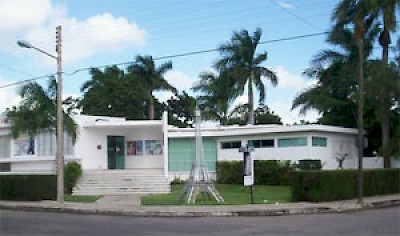
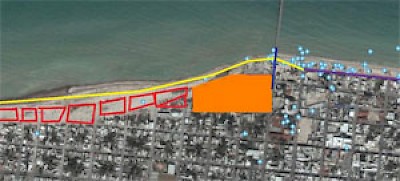
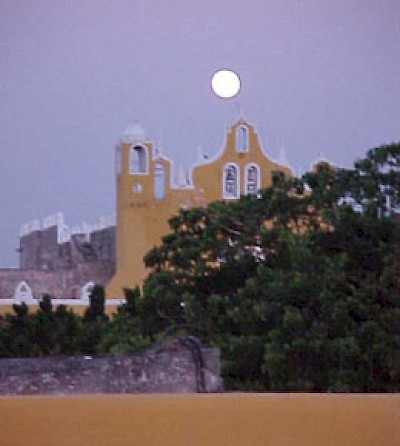
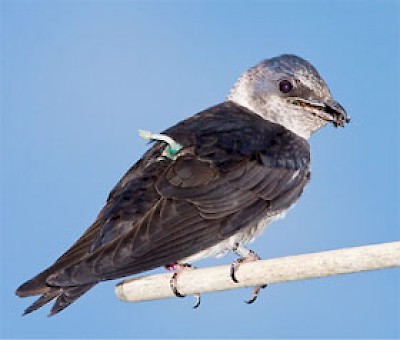

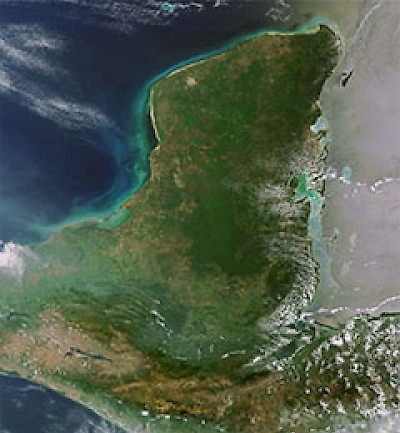

Comments
Khaki Scott 15 years ago
Rich,
Take a look at Yucatan Living's calendar to see the events at the Merida English Language Library. That makes a great base to start from and you will be here long enough to make it to several of those events - plus to the First Friday expat cocktail party at Fiesta Americana. So you will meet plenty of expats while you are in Merida.
Reply
Rich Clinton 15 years ago
My wife and I are interested in moving to Merida. We have a "look-see" trip scheduled from October 28, 2010 through November 27, 2010. We would like to meet with expats living in the area if anyone would be available during this time period. We would also be interested in attending any expat meeting as well. We would appreciate any help and advise concerning our move.
Rich
Reply
CasiYucateco 17 years ago
HI Khaki: Sorry to take so long to answer your question. I lost track of where you asked it. (sorry, I'm a clutz navegating around).
What interests me most is the founding of Merida. Well, that and old maps. Most accounts say something like, "Francisco Montejo (either "The Younger" or "El Mozo") founded Merida and you can still see his house."
For some reason, that's not enough for me. I've read four or five books looking for more details. Most copy one another without adding much more. I've got another stack of books I will go through. How did they live? Why tear down the pyramids rather than build upon them? (like in Izamal?) etc etc
And after that, I want to learn more about the Mayan pyramid where the Franciscans built their monastery, San Francisco (surprise!). Apparently, there were Mayan arches similar to the famous Labna arch and incorporated into their monastery. http://mayaruins.com/labna/y1_109.html
The early history of Merida is fascinating to me. I'd love to find something about the Mayan city itself, but virtually nothing can be found. Who built it (which ruler)? When? Why? Was it a satellite of Dzibilchaltun, one of the longest occupied areas on the peninsula? etc, etc....
And then, maps, maps, maps... ;-)
Reply
Dan and Ana 17 years ago
Please let us know if you find any information on who is in charge of road projects. We are planning on building our home in Sisal and are very interested in any news about the road that will connect Progresso to Sisal.
Reply
Khaki Scott 17 years ago
Phil,
There is a brand new government agency handling this... it is called the Consejo Consultivo para el Desarrollo de la Zona Costera de Yucatán ((Codecy), and it is headed by a man named VÃctor Cervera Hernández. The office is located in Progreso. From what I understand, they are working right now on the projects in and around the Malecon in Progreso and are going to start a "study" on the rest. I'm sorry that I don't have an address or phone number for the office, but I'm sure the restaurant owners know how to get in touch with them. Hope this helps.
Reply
Phil & Sue 17 years ago
Khaki ~ Do you know who is in charge of these road projects and how we we could contact them.
Thanks,
Phil
Reply
khaki 17 years ago
Casi - Great research - thanks for posting it! ...and isn't it interesting that "Merida went from dirt and gravel streets to paved asphalt and concrete streets in the late 1800s to early 1900s" at the very same time that the sisal business was booming? By the way - what are you researching now? keep us posted!
Also - re: beach roads... the State of Yucatan has just announced (early March, 2009) that there is going to be a new emphasis on completing beach roads in order to support the future development of coastal areas. So - I guess that means the new roads are "coming soon."
Reply
CasiYucateco 17 years ago
Just popping in with a little news about some research I was doing.
A photo from the mid 1890s shows the Plaza Independencia (Merida's main plaza) with dirt streets and tram rails.
Another photo from 1912 shows dirt streets in Merida. It isn't clear which street it is, but from the looks of the houses in the background, it is a pretty nice area.
An undated photo from around the turn of the 20th century (1900s) shows the Merida main post office with cobblestone streets. The post office and old main market was built on the site of, and with the stones from, a Mayan pyramid adjacent to the site. The pyramid was the site of the fortified San Francisco church prior to the 1800s when it was torn down. So, the cobblestones could have been local.
A photo from the 1920s seems to show asphalt streets with stone sidewalks in Centro. The streets are too smooth for dirt and too dark for cement, so asphalt is the assumption. It isn't labeled as such.
An undated drawing from the 1800s shows Casa de Montejo, across from the main plaza, with dirt streets. Just as a side note, Casa de Montejo originally had carved stone only around and above the entrance. The windows down the street were originally relatively plain. The ornate pediments and supporting figures on the windows were added around 300 years later. Original (more or less) appearance: http://www.latinamericanstudies.org/colonial/casa-montejo.jpg
So, cobblestones would be "historically appropriate" in some areas. Overall, though, it seems Merida went from dirt and gravel streets to paved asphalt and concrete streets in the late 1800s to early 1900s.
Reply
Phil & Sue 17 years ago
We are also trying to get information on the progress of the road from Sisal to Progreso.
Phil & Sue
Reply
CasiYucateco 17 years ago
How can you defend this? Well, if this were a perfect world, and I were sure the Yucatan and Merida and Izamal and other local governments had all the money they needed and there were no more hungry people living in any of those areas, well, sure! Then I would wholeheartedly agree that the streets should be made out of real stones exactly like they were in the "old days." .... oops....
Except, while there were a few "cobblestone" streets made of rough stones from ruins, those were limited. Most "colonial streets" were dirt. Dirt when dry and deep mud when wet.
Streets paved with stones from the ruins didn't hold up under automobile traffic because limestone is a soft stone. It does not have the durability of granite and other stone used in Europe. So those streets were very rough streets. It would be killer on a bike, which is how many poor people get to work. And on those buses?
When most of the streets of Merida were finally paved in the first half of the 1900s, they were paved with smooth cement or asphalt. Just like most of them are today.
For a little extra money, the streets are stamped instead of smooth cement. Seriously, isn't it better than smooth? Or should we demand 100% authenticity and have cobblestone streets that were never there. Or really really authentic and have dirt. Personally, I don't look forward to driving on a dirt street in one of those June downpours. Just speaking for myself, I'd prefer the governments spend their limited funds on services and programs for their citizens, particularly the poorest.
Maybe the streets in the gringo areas can be torn out and put back to their real colonial appearance: dirt. Then authenticity will be restored. Keep a mop handy.! ;-)
Reply
maria luisa and bill 17 years ago
The stamped concrete does, in fact, look terrible. What's next? Vinyl sided pyramids? Fiberglass palm trees? C'mon, people, how can you defend this? Don't accept this fakery! Por favor!
Reply
(0 to 11 comments)Next »